The fortunes of Raphael Sanzio, the great Urbino artist who died at the age of only thirty-seven on Good Friday 1520 (the five-hundredth anniversary of his death fell in 2020), also passed through tapestries, for which he conceived and made the great preparatory cartoons. The artist moved to Rome for good in 1508, after leaving Florence, and here he had the opportunity to come into contact with the papal court of Julius II: it was a real turning point for him as working for the pope meant opening up to important new patrons, including the banker Agostino Chigi, and meeting the most significant artists of the time. In Rome Raphael also started a flourishing workshop, comparable to a business, and his pupils, after 1527, helped spread their master’s art to various cities in Italy. It was thanks to the workshop and its collaborators that Raphael’s art began to be spread through translation engravings by the most prestigious chalcographers of the time.
The Urbino was not only a painter, but also an architect and above all the author of splendid tapestries (think of those made for the Sistine Chapel). In fact, from the preparatory cartoons he executed, most of which are kept in London at the Victoria&Albert Museum, was born the complete series of monumental tapestries that the tapestry makers of the Brussels manufactory, employed by Pieter van Aelst, delivered between 156 and 1519, now housed in the Vatican Museums. From this time on, prominent personalities began to request other series of tapestries, such as the one preserved in the Ducal Palace in Urbino completed at the behest of Cardinal Mazzarrino. The woven images, later reproposed in different manufactures and at different times, were thus vectors of Raphael’s artistic fortune over the centuries, even after his death. In addition to the images themselves, art writers also contributed to the myth of Raphael (the result was the myth of a perfect painter, of a superior artist in whom all the most extraordinary skills were concentrated) and other artists, who were increasingly intrigued and interested in his production.
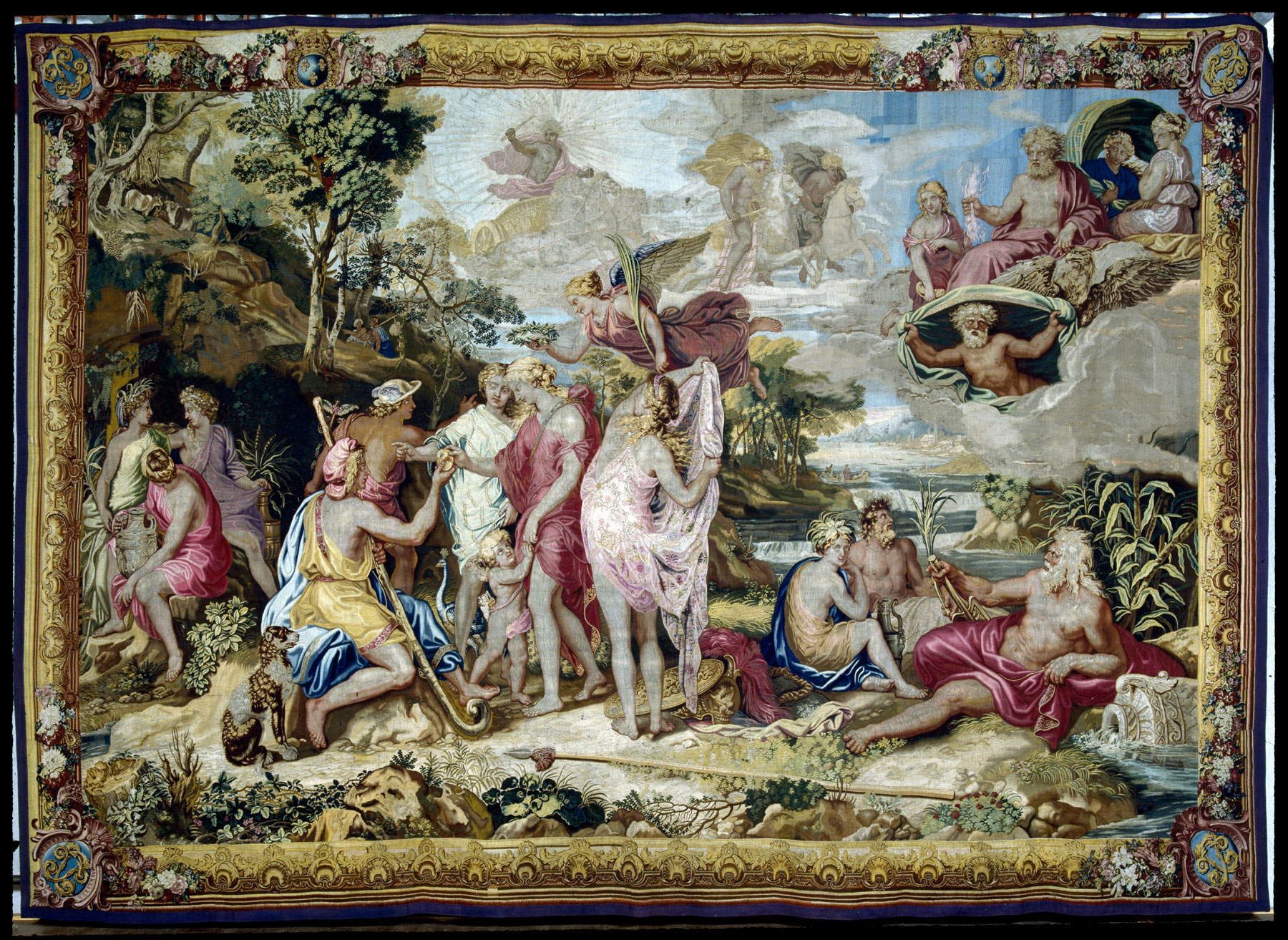 |
| Gobelins manufactory, atelier Lefebvre (from Raphael), Judgement of Paris (1691-1703; tapestry, 455 x 640 cm; Paris, Mobilier National, inv. GMTT / 480) |
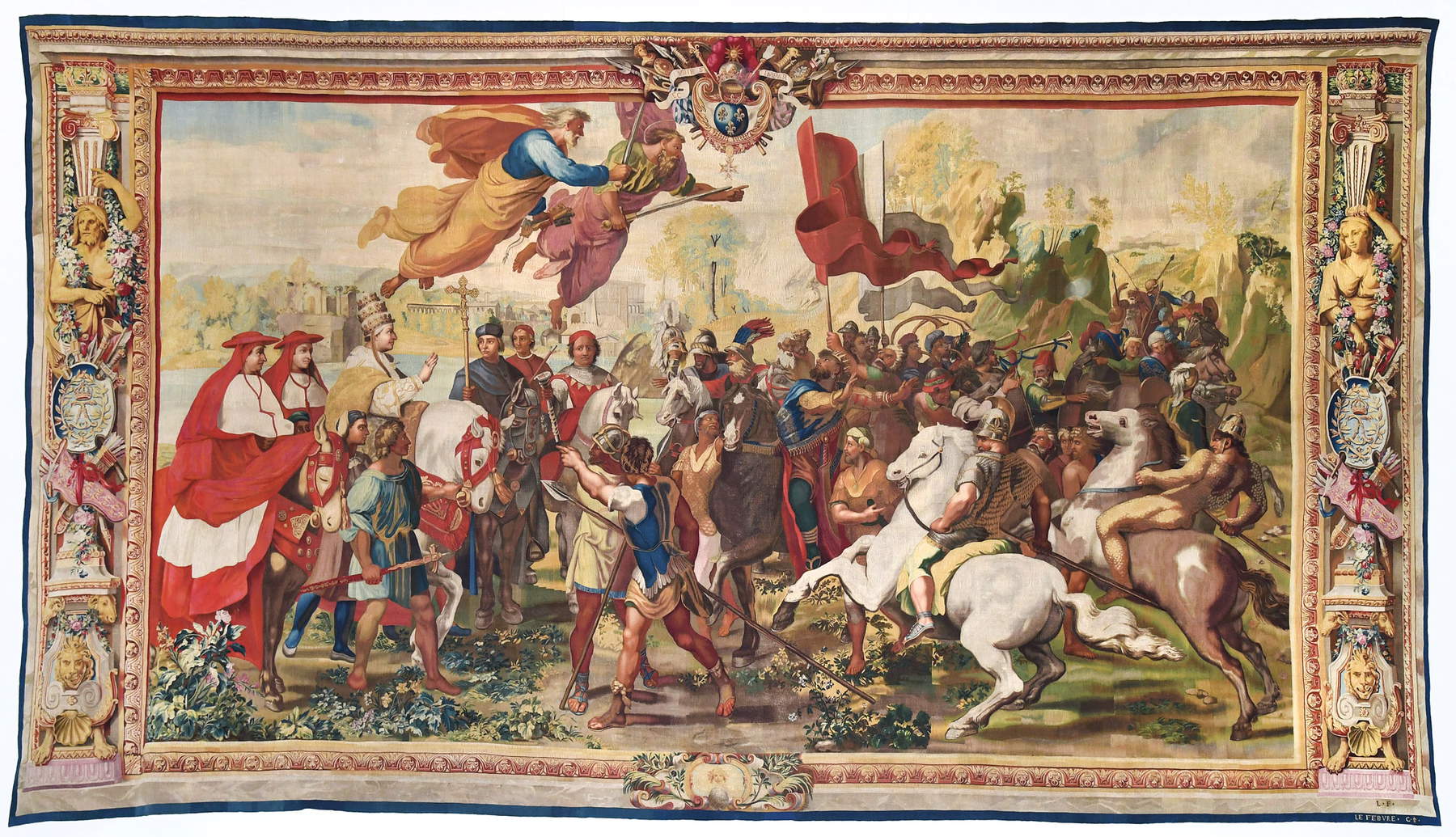 |
| Gobelins Manufacture (from Raphael), Attila driven from Rome (1732-1736, tapestry, 485 x 850 cm; Paris, Mobilier National, inv. GMTT 173/6) |
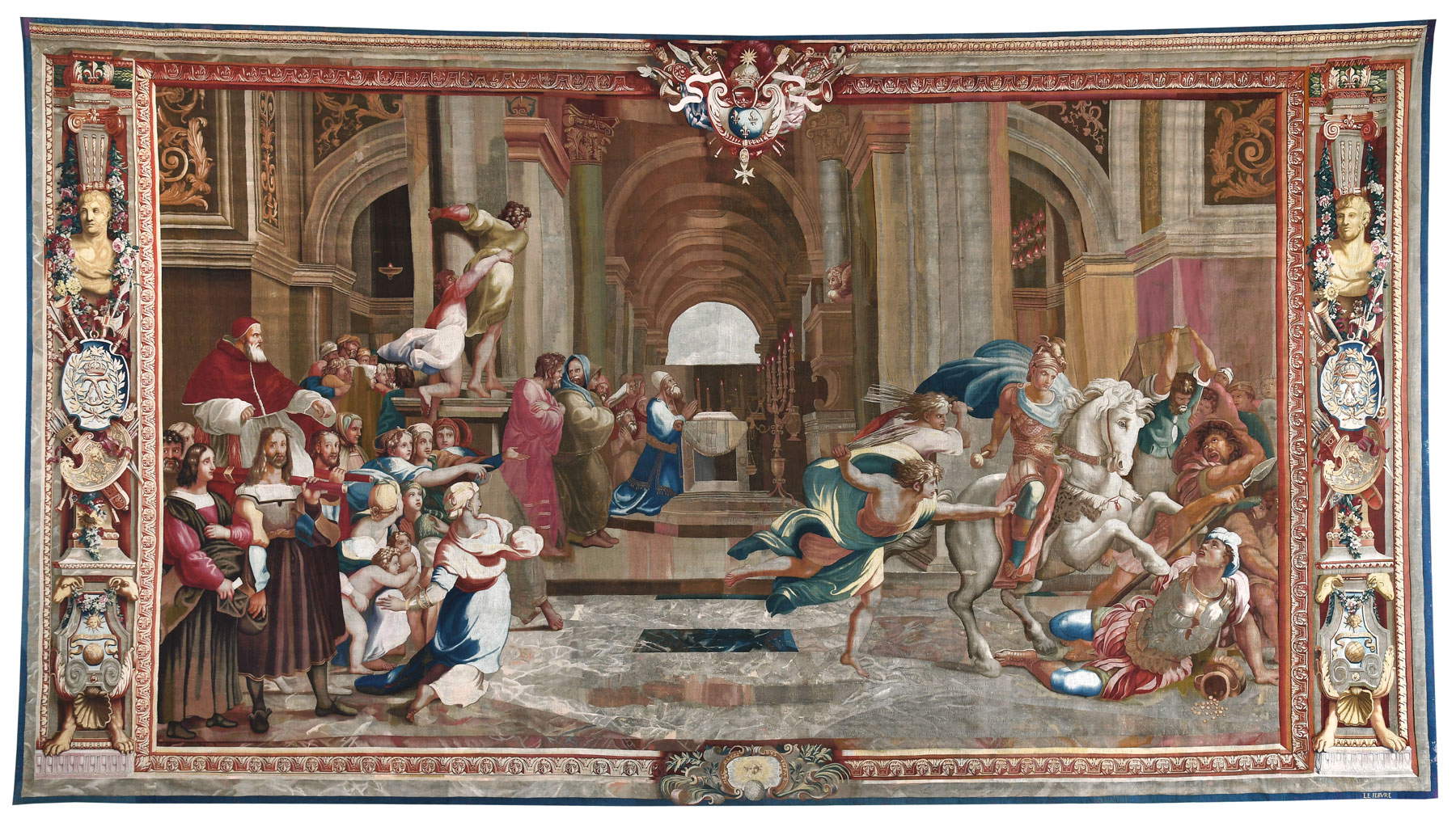 |
| Gobelins Manufacture (from Raphael), Expulsion of Heliodorus from the Temple (18th cent.; tapestry, 500 x 895 cm; Paris, Mobilier National, inv. GMTT 175/3) |
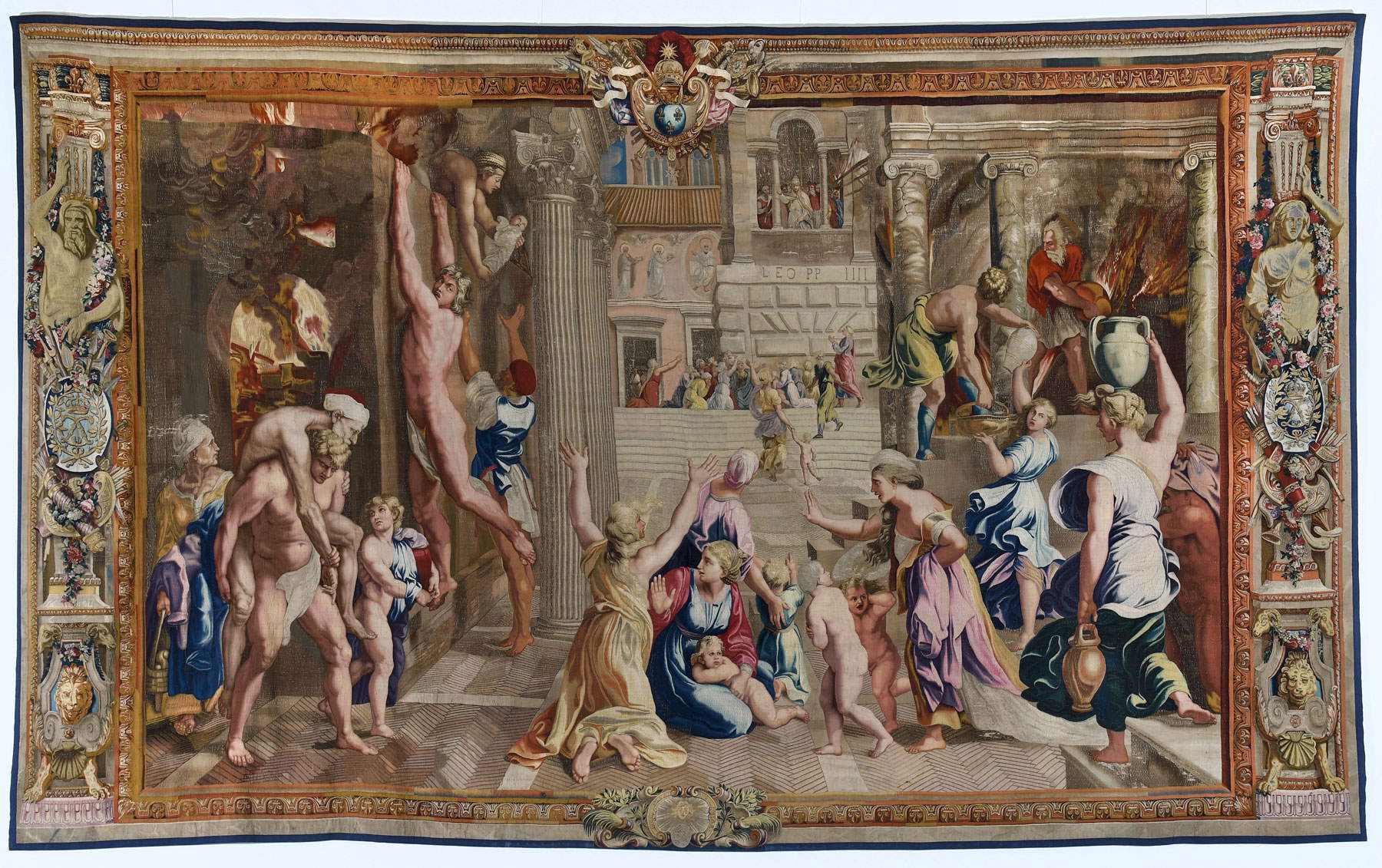 |
| Gobelins Manufacture (by Raphael), The Fire of Borgo (c. 1690; tapestry, 487 x 800 cm; Paris, Mobilier National, inv. GMTT 177) |
The exhibition On the Thread of Raphael. Enterprise and Fortune in the Art of Tapestry, curated by Anna Cerboni Balardi and Nello Forti Grazzini, on view through Sept. 12, 2021 in the Throne Room of the Ducal Palace in Urbino, home of the Galleria Nazionale delle Marche, focuses on Raphael’s fortune in tapestry and takes its cue from the most famous tapestry series, derived from Raphael’s cartoons and those made for the Scola Nuova by the Urbino artist’s collaborators after his death. The fulcrum of the exhibition are tapestries that are related to Raphael but different, as they are derived in particular from pictorial works or from the frescoes he made in the Vatican Rooms. In the Throne Room, visitors will therefore be immersed among the greatest masterpieces frescoed by the Urbino artist, but in this case woven by the greatest European manufactures, among them the Parisian Gobelins. Sovereigns and aristocrats throughout Europe could thus have in their residences, even if far from Rome, the works of the Vatican Rooms in the form of large tapestries, thus recreating the impression of the originals. This testifies to the interest in Europe, especially in France, in Sanzio’s art.
Upon entering the Salone, visitors will have the opportunity to admire twelve large works woven in Europe’s finest tapestries and depicting the frescoes that Raphael completed in Rome: eleven of these squared frescoes come from the Mobilier National in Paris, set up here thanks to the architects of the Galleria Nazionale delle Marche. They testify to how France, under the reign of Louis XIV, but then also until the 19th century, sought to recreate in tapestry in Paris, in various replicas, the Urbino artist’s most famous frescoes, through French painters from the French Academy residing in Rome to copy the prototypes from life and the tapestry makers framed by Colbert under the Gobelins manufactory, opened in Paris and active exclusively for royal commissions, where many of the tapestries were woven. Some famous scenes can be recognized among the tapestries on display: the Judgment of Paris (1691 - 1703), Attila driven out of Rome (1732 - 1736), the Expulsion of Heliodorus from the Temple (18th century), both frescoes of which can be seen in the Heliodorus Room, and the Burning ofBorgo (c. 1690), the fresco of which can be seen in the Borgo Fire Room.
The exhibition is in collaboration with the Vatican Museums and the Mobilier National in Paris.
For more info: www.gallerianazionalemarche.it
Pictured is the set-up of the exhibition On the Thread of Raphael in the Sala del Trono dil Palazzo Ducale in Urbino. Ph.Credit Claudio Ripalti
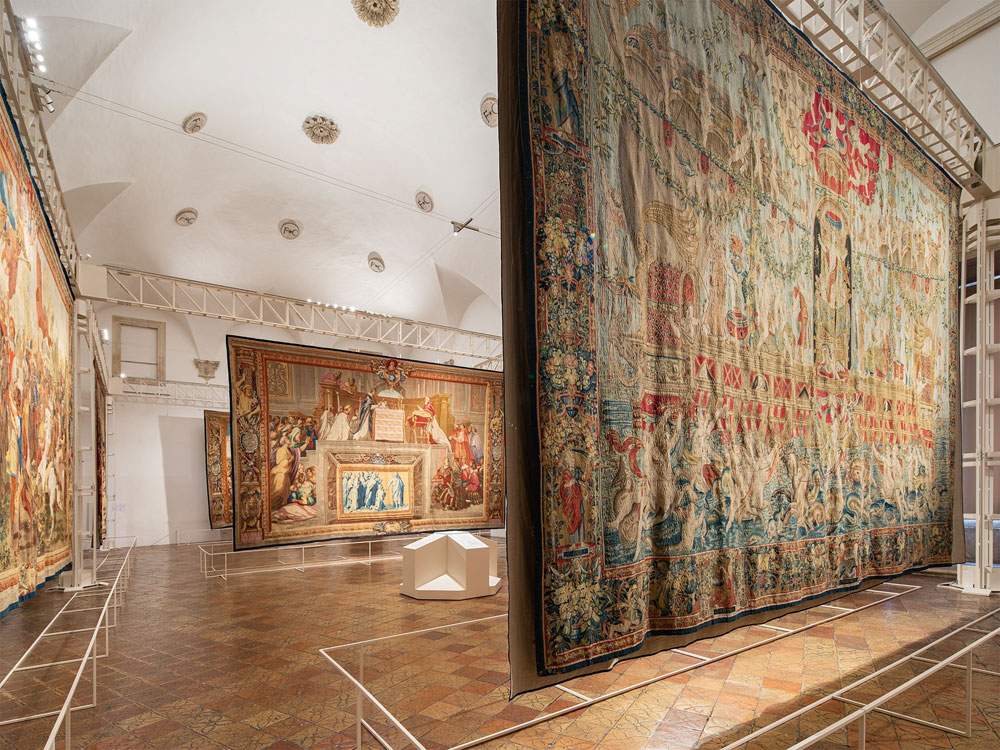 |
| Urbino, on precious tapestries Raphael's frescoes from the Vatican Rooms |
Warning: the translation into English of the original Italian article was created using automatic tools. We undertake to review all articles, but we do not guarantee the total absence of inaccuracies in the translation due to the program. You can find the original by clicking on the ITA button. If you find any mistake,please contact us.